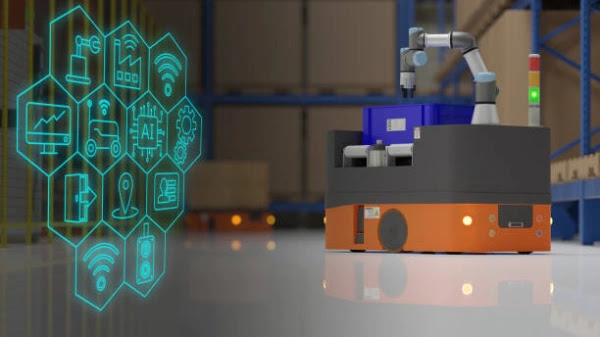Featured
- Get link
- X
- Other Apps
Smart Farming
Revolutionizing Agriculture through Precision Agriculture and Crop Monitoring
Introduction
In an era characterized by rapid population growth, climate
change, and resource scarcity, agriculture faces unprecedented challenges in
meeting global food demand while minimizing environmental impact. Smart
farming, also known as precision agriculture, has emerged as a transformative
approach to address these challenges by leveraging advanced technologies to
optimize farming practices and enhance crop productivity. In this article, we
delve into the principles of smart farming, focusing on precision agriculture
and crop monitoring, and explore how these innovations are revolutionizing the
agricultural sector.
- Precision
Agriculture: Precision agriculture refers to the targeted management
of agricultural inputs such as water, fertilizers, and pesticides, based
on real-time data and analytics to optimize yields, minimize waste, and
reduce environmental impact. At the core of precision agriculture are
technologies such as global positioning systems (GPS), geographic
information systems (GIS), drones, and sensors, which enable farmers to
monitor and manage field variability with unprecedented accuracy.
- Key
Components of Precision Agriculture: a. Remote Sensing:
Satellite imagery and aerial drones equipped with multispectral and
hyperspectral cameras enable farmers to collect high-resolution data on
crop health, soil moisture levels, and nutrient distribution across large
agricultural landscapes. b. IoT Sensors: Soil moisture sensors,
weather stations, and crop sensors deployed in the field provide real-time
measurements of environmental conditions, allowing farmers to make
data-driven decisions on irrigation scheduling, fertilizer application,
and pest management. c. Data Analytics: Advanced analytics and
machine learning algorithms process vast amounts of data collected from
sensors and remote sensing platforms, identifying patterns, trends, and
anomalies to optimize farming practices and predict crop yields with
greater accuracy.
- Benefits
of Precision Agriculture: Precision agriculture offers a multitude of
benefits for farmers, consumers, and the environment: a. Increased
Yields: By precisely managing inputs and addressing field variability,
farmers can optimize crop growth conditions, resulting in higher yields
and improved farm profitability. b. Resource Efficiency: Precision
agriculture minimizes the use of water, fertilizers, and pesticides by
targeting application to areas of the field where they are most needed,
reducing waste and environmental pollution. c. Cost Savings: By
optimizing input usage and reducing waste, precision agriculture helps
farmers lower production costs and improve overall operational efficiency.
d. Environmental Sustainability: By minimizing the environmental
footprint of agriculture, precision farming contributes to sustainable
land management, biodiversity conservation, and mitigating the impacts of
climate change.
- Crop
Monitoring Technologies: Crop monitoring technologies play a crucial
role in providing farmers with real-time insights into crop health, growth
stages, and pest infestations. Some key technologies include: a. Satellite
Imagery: Satellite-based remote sensing platforms capture
multispectral imagery of agricultural fields, allowing farmers to monitor
crop health, identify stress factors, and assess vegetation vigor over large
areas. b. Aerial Drones: Drones equipped with high-resolution
cameras and multispectral sensors enable farmers to capture detailed
imagery of crops at a finer spatial resolution, facilitating precision
agriculture applications such as plant counting, weed detection, and
disease diagnosis. c. Ground-based Sensors: In-field sensors
measure various parameters such as soil moisture, temperature, and
nutrient levels, providing farmers with real-time data on crop and soil
conditions for optimal management decisions.
- Integration
of Data and Analytics: The integration of data from multiple sources,
including satellite imagery, drone surveys, and in-field sensors, with
advanced analytics is key to unlocking the full potential of crop
monitoring technologies. Machine learning algorithms analyze diverse
datasets to generate actionable insights, such as predicting crop yield,
identifying areas of nutrient deficiency, and detecting early signs of
pest outbreaks.
- Challenges
and Future Directions: Despite its potential, the adoption of smart
farming technologies faces several challenges, including high initial
costs, technical complexity, and data privacy concerns. Additionally,
bridging the digital divide and ensuring access to technology for
smallholder farmers in developing countries remains a pressing issue.
However, ongoing advancements in sensor technology, data
analytics, and connectivity are driving the evolution of smart farming towards
greater automation, interoperability, and scalability. Emerging technologies such
as 5G networks, edge computing, and blockchain hold promise for addressing
existing challenges and expanding the reach of smart farming solutions to a
broader audience.
Conclusion
Smart farming, encompassing precision agriculture and crop
monitoring technologies, represents a paradigm shift in agricultural practices,
enabling farmers to make informed decisions, optimize resource usage, and
enhance crop productivity while promoting environmental sustainability. By
harnessing the power of data and analytics, smart farming has the potential to
revolutionize the way food is produced, ensuring food security, mitigating
environmental impact, and fostering resilience in the face of global challenges.
As smart farming continues to evolve, concerted efforts are needed to overcome
barriers to adoption, promote knowledge sharing, and empower farmers with the
tools and technologies needed to thrive in an increasingly digital agricultural
landscape.
- Get link
- X
- Other Apps

